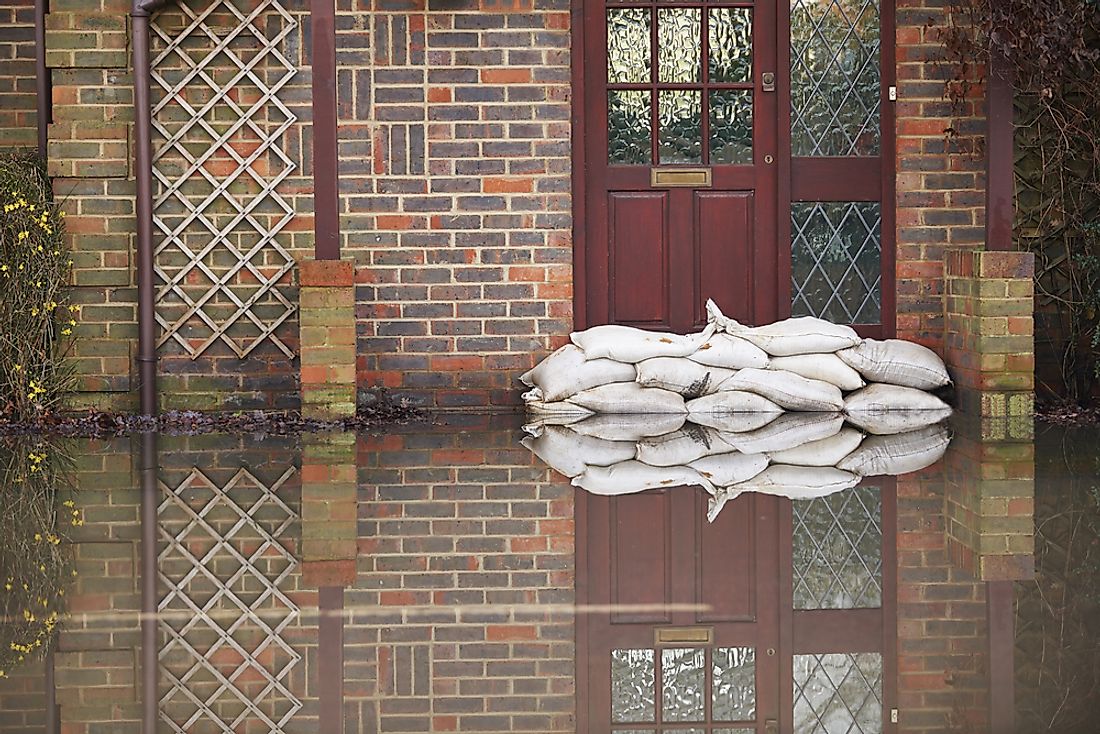The Worst Disasters in the History of the United Kingdom

The United Kingdom has a history of different types of disasters including incidences ranging from man-made disasters to natural disasters. Due to the geographical location of the UK, climate warming, rainfall intensity, and the rise in sea level, it is almost impossible to prevent incidences of natural disasters such as floods, storms, drought, heat waves, and low temperatures from occurring. Transportation accidents have also been given special attention over time. There have been catastrophic transportation accidents in the last decade including air crashes, sea accidents, and road crashes. Incidences of terrorism, massive fires, and oil explosions have also played an important role in the disaster environment of the UK.
Disasters
Natural Disasters
The UK’s geographical location exposes it to the risk of natural disasters such as hurricanes, storms, heat waves, low temperatures, and flooding. 1816 is known as the "Year Without a Summer". During this year, climate abnormalities lowered temperatures considerably, causing a major food which led to 65,000 deaths. In 1783, over 20,000 British people died from air poisoning that was caused by the Laki Volcano fissure eruption. The eruption caused a widespread and massive outpouring of poisonous gases such as hydrogen fluoride and sulfur dioxide. The dead were mainly outdoor workers from Bedfordshire and Lincolnshire. The Great Storm of 1703 that took place on November 26, 1703, was a destructive cyclone that struck central and southern England leading to over 8,000 deaths and destroyed over 700 ships. In September 1782, about 3,500 people were killed during the Central Atlantic hurricane of 1782 while about 2,000 people died in the UK alone in the 2003 European Heatwave.
Famine
The UK’s famine disasters have been a result of the natural disasters such as extreme weather conditions. The Great Irish Famine was a period of starvation that occurred between 1845 and 1852 leading to a drop in the Irish population by about 20%. At least one million people died during the famine. The famine was attributed to poor governance and potato dependency. The Irish Famine of the 18th century, also known as the Year of Slaughter, is estimated to have killed a greater proportion of the population compared to the 1845-1852 famine. The famine, which occurred from 1740-1741, was caused by extreme cold and rainy weather. The 100,000 deaths from starvation were compounded by the outbreak of fatal diseases. The Great Famine of 1315-1317 was the first of the series of large-scale famines which struck the UK. The famine was as a result of bad weather that led to crop failure. The famine led to over 5,000 deaths and was also marked by extreme levels of crime, cannibalism, and infanticide.
Pandemic
The Black Death is perhaps the most devastate pandemic in the history of Europe. The pandemic took place between 1346-1353 and led to the death of between 75 million and 200 million people in Eurasia, with 3.5 million people dying in the UK. The plague disease was caused by Yersinia pestis carried by ground rodents. The plague reoccurred in Europe until it was completely wiped out in the 19th century. The 1918 Spanish Flu pandemic was an influenza pandemic that affected over 500 million people around the world killing about 225,000 people in the UK and over 50 million people worldwide. The Great Plague of London killed about 60,000 people within 18 months between 1665 and 1666. It was the last epidemic of the bubonic plague.
Other Worst Disasters
In addition to the natural disasters, famine, and pandemics, thousands of lives in the UK have been lost through several disasters, especially man-made. Disasters include the Great Smog of 1952 that killed 4,000 to 12,000 people, the Great Fire of 1212 which killed about 3,000 people, and the Scilly naval disaster of October 1707 which led to over 1,500 deaths. The sinking of the Titanic ship killed over 1,500 people and is perhaps the most popular UK disasters in the recent history. The disaster was greeted with shock and outrage at the loss of lives and the operation failures which led to it.
The Worst Disasters in the History of the United Kingdom
| Rank | Disaster | Casualties |
|---|---|---|
| 1 | Black Death Pandemic | 3,500,000 |
| 2 | Great Irish Famine | 1,000,000 to 1,500,000 |
| 3 | Spanish flu pandemic | 225,000 |
| 4 | Great Irish Famine | 100,000 |
| 5 | Year Without a Summer | 65,000 |
| 6 | Great Plague of London | 60,000 |
| 7 | Laki volanco fissure eruption | 20,000 |
| 8 | Great Storm of 1703 | 8,000 |
| 9 | Great Famine | 5,000 |
| 10 | The Great Smog | 4,000 to 12,000 |
| 11 | Blockade of Porto Bello | 4,000 |
| 12 | 1782 Central Atlantic hurricane | 3,500 |
| 13 | 1212 Great Fire of London | 3,000 |
| 14 | Tainted Blood Scandal | 2,400 |
| 15 | 2003 European Heat Wave | 2,139 |
| 16 | Bristol Channel Floods | 2,000 |
| 17 | Sweating Sickness | 2,000 |
| 18 | Christmas Eve Storm | 1,900 |
| 19 | Scilly Naval Disaster | 1,550 |
| 20 | RMS Titantic | 1,517 |







